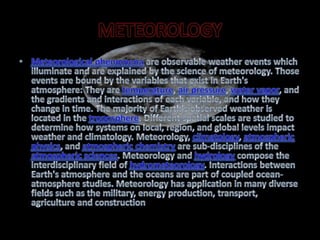Meteorology is the scientific study of the atmosphere and weather processes. Key developments include Aristotle writing one of the first texts on meteorology in 350 BC, the invention of instruments to measure weather phenomena like the rain gauge and barometer in the 15th-17th centuries, and breakthroughs in understanding atmospheric dynamics and air flow in the 19th-20th centuries with discoveries like the Coriolis effect.






